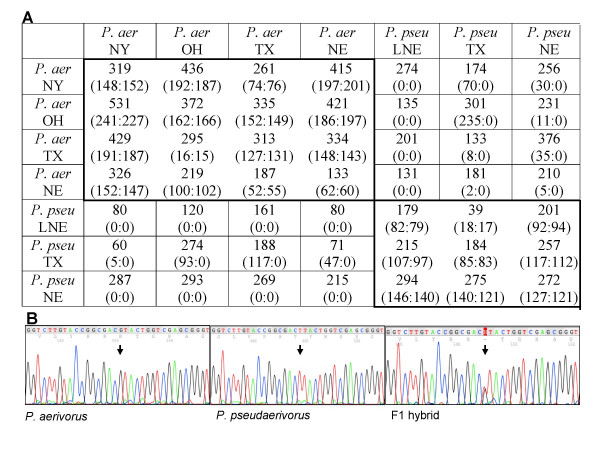Figure 6.
F1 hybrids of P. aerivorus and P. pseudaerivorus n. sp. follow Haldane's rule. (A) Results of crosses between four strains of P. aerivorus (P. aer) from New York (NY), Ohio (OH), Texas (TX) and Nebraska (NE) and three strains of P. pseudaerivorus n. sp. (P. pseu) from Texas (TX), Indian Cave, Nebraska (NE) and Lincoln, Nebraska (LNE). Each strain was crossed with all other strains in a reciprocal manner. Columns represent female animals and rows represent males used for crosses. Mating was performed in triplicate, placing one virgin female and one male on a plate. Numbers show the total of eggs laid by one female. In brackets, the number of eggs that developed into phenotypic female vs. male progeny is indicated. The difference between the upper number and the sum of the numbers in brackets is accounted for by unfertilized eggs and embryonic lethality commonly observed after crosses within and between animals of these two species. The given numbers represent the result of the experiment with the highest number of offspring. (B) SSU sequence profile of P. aerivorus, P. pseudaerivorus n. sp. and a hybrid between the two species.

